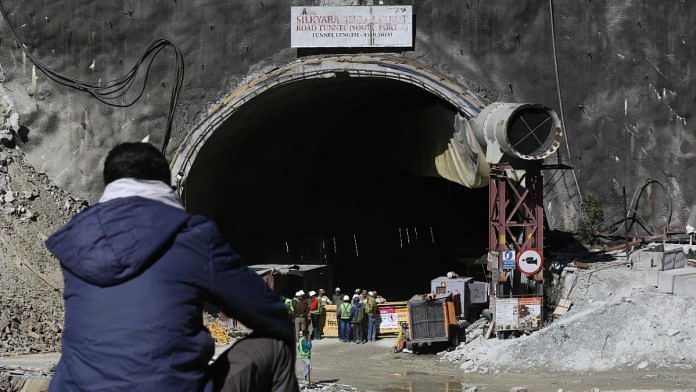Uttarkashi: Sumit, a contract worker from Jharkhand, was almost done with his night shift at the under-construction Silkyara Tunnel Sunday morning when a portion of it collapsed right before his eyes. He saw the debris fall and the structure give way, trapping 40 of his colleagues. He was only saved because he was walking a few steps ahead.
“At the time of the collapse, grooving work was in progress, and the operator (person in-charge) was also present. Washing work was going on in the tunnel. Main do kadam badha aur maine dekha ki mitti gir gayi (I had walked just about two steps ahead when I saw the debris fall),” he told ThePrint.
At around 5 am on 12 November, a 30-meter section of the under-construction Silkyara Tunnel in Uttarakhand’s Uttarkashi district collapsed. Since then, efforts have been on to rescue the trapped men, but have hit one snag after another. A specialised auger machine imported from the US — and airlifted from Delhi after the first auger broke down Tuesday — was being used to drill a path to the trapped men, but that too broke down Friday.
Now, colleagues, along with family members of some of the workers anxiously await the arrival of another auger being airlifted from Indore and brought in.
“The work is expected to resume tomorrow morning using a machine that will be airlifted from Indore. However, the specific time for the arrival of this machine has not been disclosed,” said Anshu Manish Khalkho, Director (A&F) of National Highways and Infrastructure Development Corporation Limited (NHIDCL), to the media.
As of Friday afternoon, 24 metres of debris had successfully been penetrated following an overnight operation, instilling hope in the workers — trapped for six days now in a 2 to 2.5 kilometres buffer zone within the tunnel — of imminent extraction.
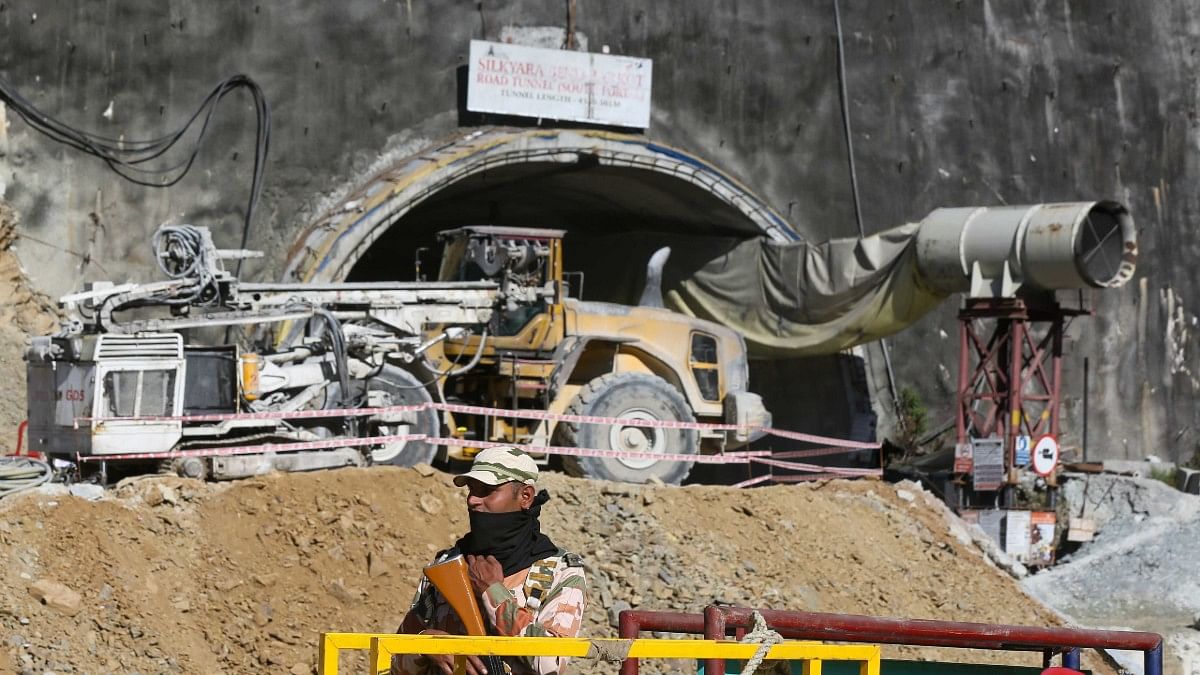
During a media briefing, Khalkho said that there is still work to be done to penetrate about 24-25 meres further into the tunnel.
“Between 45 to 60 metres of debris has accumulated in the tunnel where drilling operations are underway,” he said.
He said that the auger machine operates on diesel, and has to be switched off periodically to allow it to rest and cool down. As a result, drilling is progressing at a rate of just a metre per hour.
The rescue strategy employed currently involves drilling a path through the debris, followed by successive insertion of 6-metre-long pipes, each with a diameter of 900 mm, to construct an “alternative tunnel” providing a crawlable passage to the workers. Another plan involves the use of stretchers with wheels to evacuate all workers within seven minutes.
By Thursday, four pipes for the makeshift tunnel for the workers’ escape had been laid. The process of laying the fifth was underway when ThePrint visited Friday.
The National Disaster Response Force has even conducted mock drills — one on Thursday and another on Friday afternoon — for the rescue.
Officials said that a continuous supply of dry fruits, oxygen, water, medicines, etc., is being provided through a three-inch pipe to the trapped workers. Conversations are intermittently conducted with the workers through walkie-talkies.
G.L. Nath, public relations officer of Navayuga Engineering Company Limited, the company building the tunnel on behalf of the NHIDCL, said to the media Friday: “All the workers are fine…and everyone will be evacuated as soon as possible.”
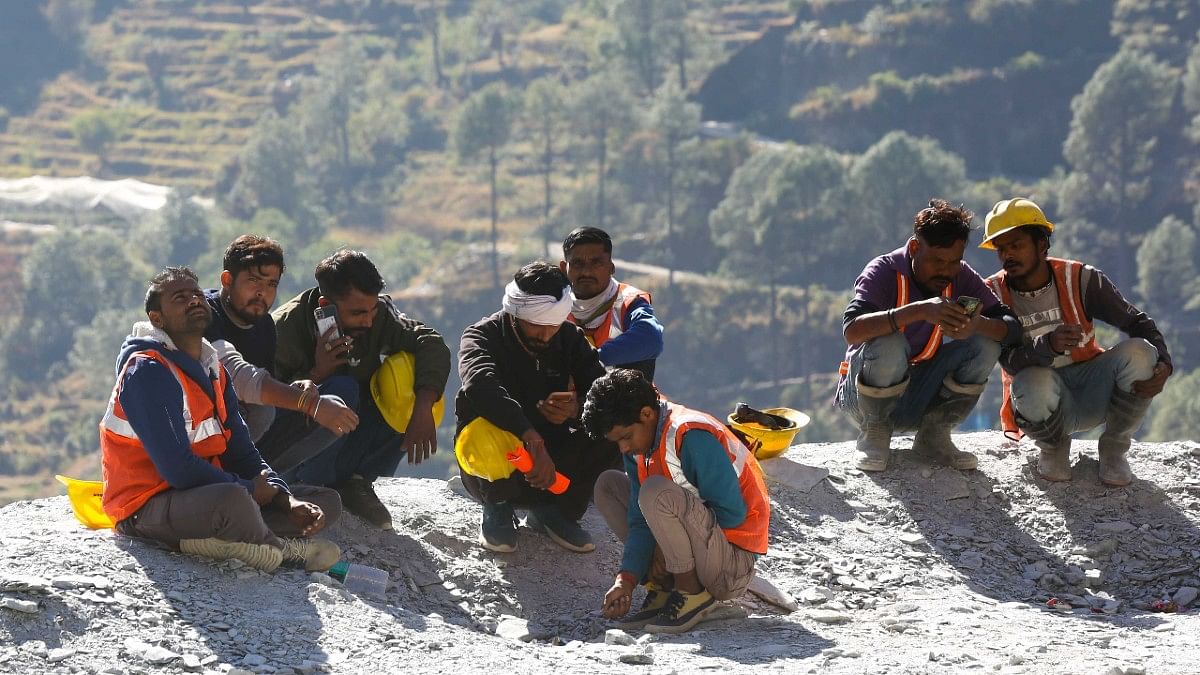
Rescue operations are ongoing with a team of 160 personnel from the National Disaster Response Force (NDRF), State Disaster Response Force (SDRF), Indo-Tibetan Border Police (ITBP), and Border Roads Organization (BRO) working day and night.
The drilling operation initially faced challenges, including a breakdown of the initial auger machine and a landslide, but the American auger machine was deployed to continue rescue efforts.
The Silkyara Tunnel (or the Silkyara-Barkot tunnel) is part of the central government’s ambitious Char Dham all-weather road project. Being built at an estimated cost of around Rs 12,000 crore, it aims to reduce the distance from Uttarkashi to Yamunotri by approximately 25 kilometers.
Also Read: Murmure & kishmish sent, augers at work — rescue of 40 men trapped in Uttarkashi tunnel enters day 5
‘We urged everyone to come away’
Of the 40 workers — aged 20 to 35 years — employed in the construction of the tunnel, 15 are from Jharkhand. Bhuvanesh Pratap Singh, CEO of JAP-IT (Jharkhand Agency for Promotion of Information Technology), assured that all workers from the state are safe and will be airlifted back to Jharkhand once out. The rest are from Bihar, Uttar Pradesh, Assam, and Odisha. Some of them have been working at the site for the past four years, while some arrived mere weeks ago.
Sumit is among those who came to Uttarakhand from Jharkhand. He has been at the construction site for three months. The contractor, from whom he was hired to work on the tunnel, had also sent five others — two from Assam and three others from Jharkhand. All of them are among those trapped within the tunnel. Sumit could only confirm the safety of his friend Vijay.
Om Kumar, 20, from Ramgarh, Jharkhand, was among the first to spot the debris and mud starting to fall. “We urged everyone to come away, but they were sitting there, observing the soil. So, we began walking ahead, and suddenly a lot of stones and mud fell down,” he told ThePrint.
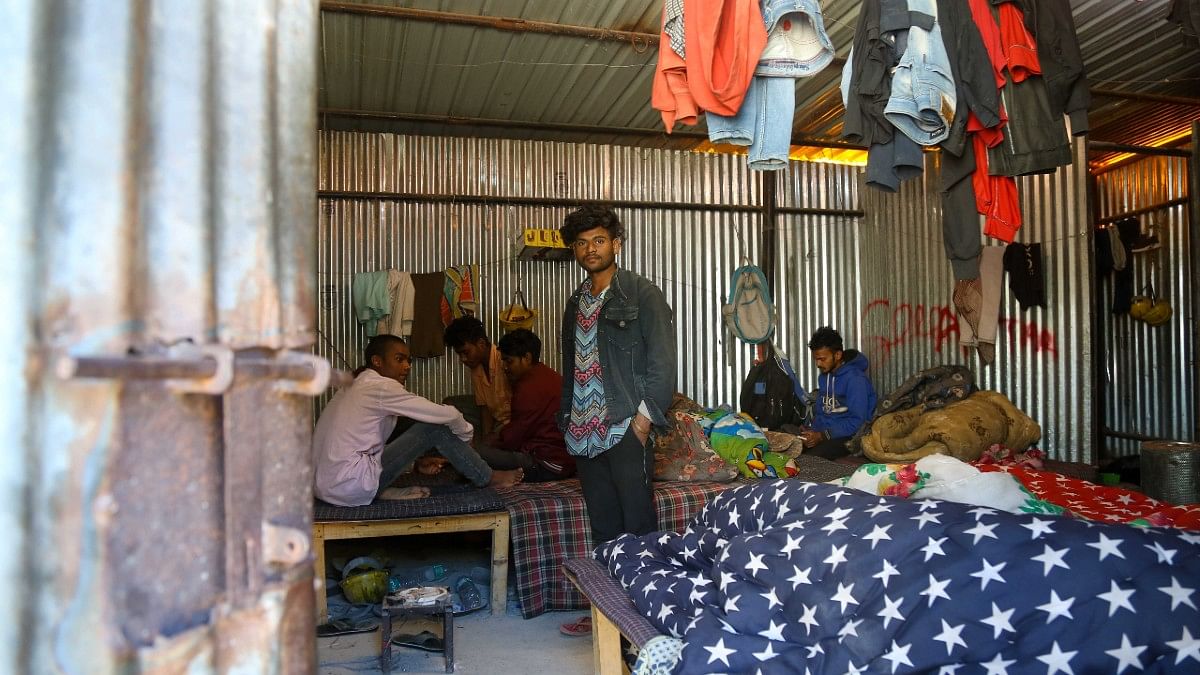
Another worker, 30-year-old Sujit Kumar, who is from Prayagraj, is grateful that he was off the day of the incident. However, his distress for his colleagues is writ large on his face. He has been present at the site every day since the day of the collapse, hoping for their speedy extraction.
Chief Minister Pushkar Singh Dhami, meanwhile, has announced that all tunnels in Uttarakhand will undergo a review. He mentioned that NHIDCL was monitoring the tunnel, and a comprehensive assessment of all ongoing tunnel projects in the region will be conducted.
Chief Medical Officer R.C.S. Panwar of Uttarkashi has announced the establishment of a six-bed temporary clinic near the tunnel, along with 10 ambulances and first aid preparations.
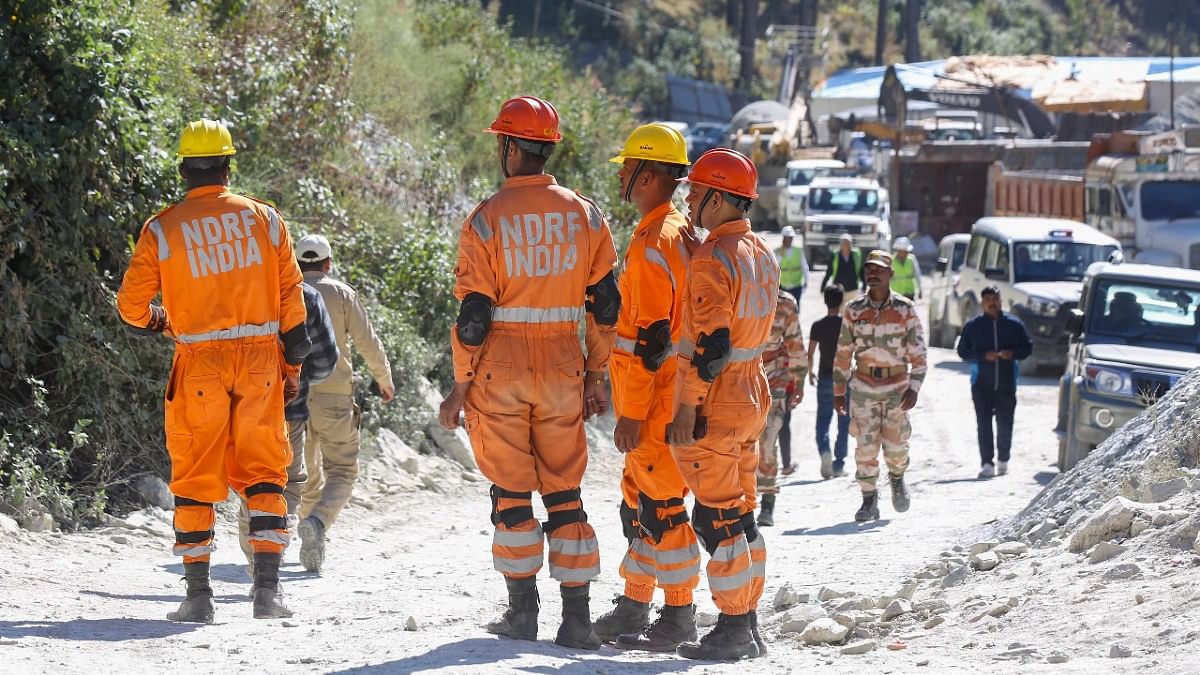
‘Himalayas not stable’
Following the tunnel collapse, geologists have started raising questions about the projects underway on the Char Dham Highway.
Y.P. Sundriyal, geologist and professor of the Hemwati Nandan Bahuguna Garhwal University, alleged that negligence on the part of NHIDCL led to the incident.
“The absence of ground penetrating radar (GPR) in tunnel construction, the lack of emergency exits, and the absence of steel pipes or bars at 2-3 feet intervals were among the causes of the incident,” he told ThePrint, adding that there is a lack of accountability in such cases.
ThePrint visited the NHIDCL office for a comment. This report will be updated if and when a response is received.
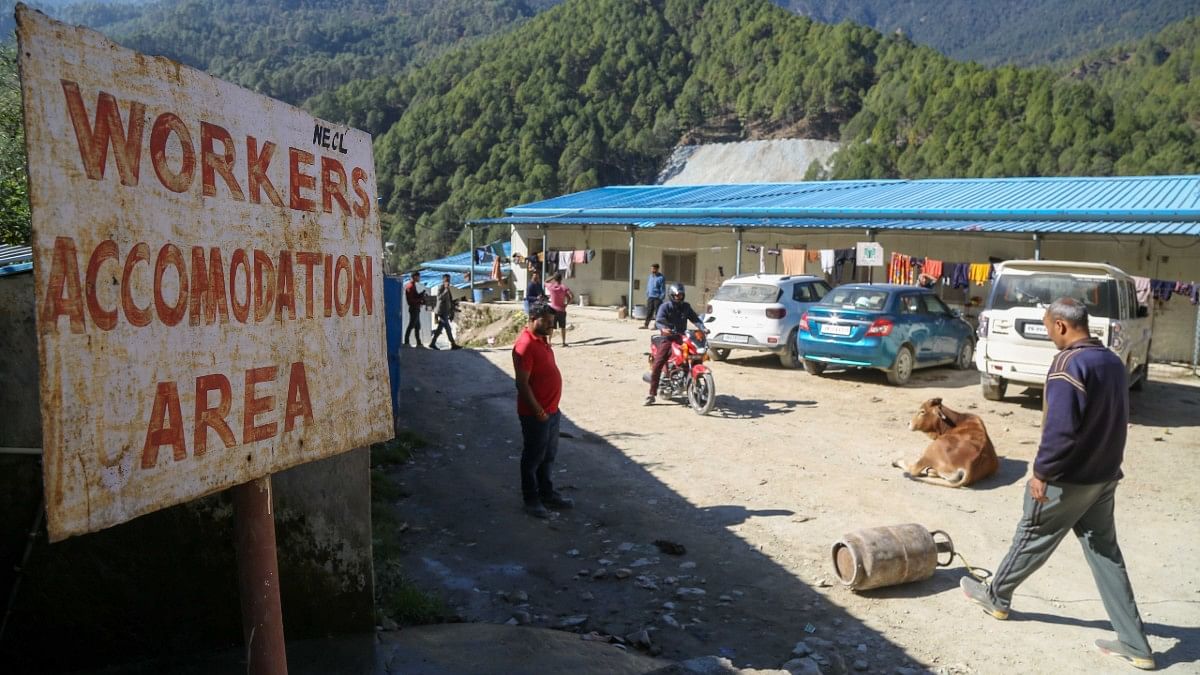
Sundriyal also spoke about the need to “scientifically utilise” resources in the Himalayan state.
Referring to a report from a few years ago that said the height of Mount Everest had “grown by 86 cm”, he said: “The Himalayas are not stable, they are rising every moment and hence the Himalayan resources should be used scientifically.”
(Edited by Zinnia Ray Chaudhuri)
Also Read: Hindi TV news has no time for the Uttarakhand tunnel collapse. Gaza & Ayodhya rule the air


